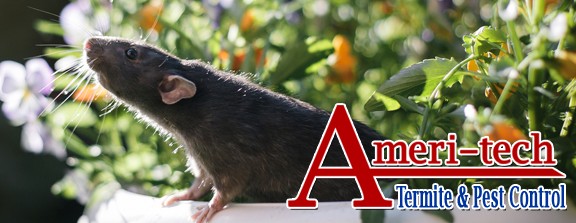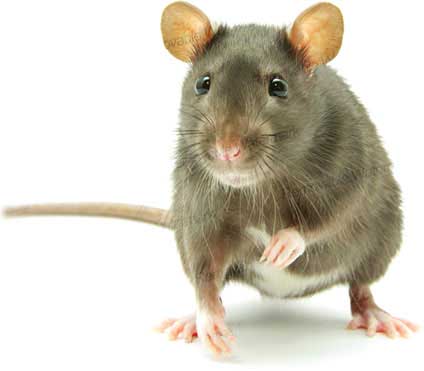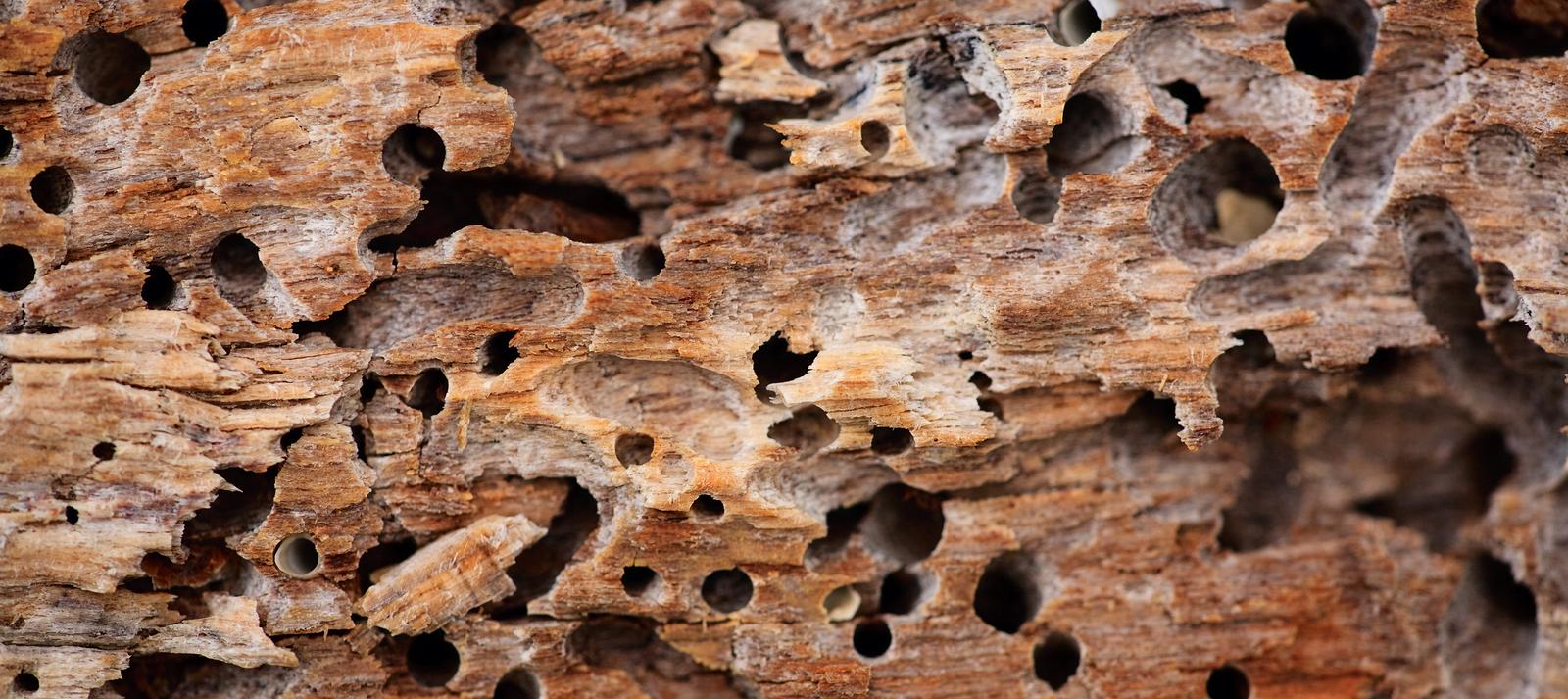Springtown, TX Pest Control
 Pest Control in Springtown, TX
Pest Control in Springtown, TX
At Ameritech Termite & Pest Control, we pride ourselves on offering excellent customer service. We have been proudly servicing businesses and homes in the Dallas Fort Worth Metroplex for over 30 years. If you need any kind of pest control service in Springtown, contact Ameri-Tech Termite & Pest Control Company. We are a locally owned business that focuses on the total removal of all your bugs, ants, spiders, etc. We care about our customers, and you can trust us to do the job right the first time.
Our Commitment to You:
-
100% Satisfaction Guarantee: We stand behind our services with a promise that if any pest issues arise between regular visits, we will return promptly to address the problem at no additional cost. Your peace of mind is our priority.
-
Safe and Effective Solutions: We exclusively use top-tier professional products that have been proven to work efficiently. Our application methods are specially designed to be safe for both people and pets, ensuring your home remains a comfortable and secure environment.
With a commitment to customer care and a comprehensive approach to pest management, we ensure that your pest control needs are met with reliability and expertise. Trust Ameritech Termite & Pest Control to protect your home and business effectively.
Facts About Springtown, TX - In 1856 Joseph Ward of New Jersey settled on the site, on a creek fed by numerous springs seventeen miles northeast of Weatherford. Three years later Ward designed the town square and named the place Littleton's Springs after a pioneer family. In the mid-1870s the name was changed to Springtown following a petition by a majority of the 200 residents.By 1890 the community had four churches, two cotton gins, one steam corn mill, a daily stage to Weatherford costing one dollar, and a triweekly stage to Decatur. Springtown grew from a population of 500 in 1890 to nearly 800 in 1940. -TSHA
What Diseases Can Ticks Transmit?
Ticks are more than just pesky parasites; they are vectors for several serious diseases. Some of the most common tick-borne illnesses include:
- Lyme Disease: This is perhaps the most well-known tick-borne disease, caused by the bacterium Borrelia burgdorferi. Symptoms often start with a characteristic rash and can progress to more severe issues if left untreated.
- Rocky Mountain Spotted Fever: This potentially life-threatening disease is caused by the bacterium Rickettsia rickettsii. Symptoms typically include fever, headache, and a spotted rash.
- Tularemia: Caused by the bacterium Francisella tularensis, tularemia can lead to fever, skin ulcers, and pneumonia.
These diseases highlight the importance of addressing any tick issues promptly.
What Should You Do If You Have a Tick Problem at Your Springtown TX Home?
-
Inspect Your Home and Yard: Regularly check both inside and outside your home for ticks, especially in tall grasses and wooded areas.
-
Maintain Your Yard: Keep your grass mowed short, remove leaf piles, and create a barrier with gravel or wood chips between your yard and wooded areas to reduce tick habitats.
-
Use Tick Repellents: Apply tick repellents to exposed skin and clothing when spending time in potentially infested areas. Products containing permethrin and DEET are often recommended.
-
Contact a Professional: If you notice a significant tick problem, it's wise to consult with a pest control expert who can offer targeted solutions tailored to your situation.
-
Educate and Prepare: Familiarize yourself and your family with the symptoms of tick-borne diseases and ensure everyone knows how to properly remove ticks from the skin if necessary.
Taking these actions can help keep your home and family safe from ticks and the diseases they may carry.
Types of Cockroaches Found in Texas
When it comes to cockroach infestations in Texas, several species are particularly notorious:
-
Oriental Cockroaches
Often larger and darker than other types, these roaches are usually found in damp, cool spaces. -
German Cockroaches
Smaller but incredibly prolific, German cockroaches are commonly found in kitchens and bathrooms, thriving in warm, humid environments. -
American Cockroaches
Recognizable by their size, they're often seen in basements and other moist areas of a property.
How Cockroaches Infest Homes in Springtown TX
Cockroaches are not just an outdoor nuisance. They target homes and businesses where food, warmth, and moisture are present. Here's how they make their way inside:
-
Nocturnal Activity
Most cockroaches are active at night, which is why you might not see them during the day but find traces of their presence. -
Attracted to Common Household Items
Unlike pests that stick to plants and gardens, cockroaches are drawn to household items such as food residues, toothpaste, and even kitchen sponges. -
Entry Points
They often slip in through cracks, crevices, and even open doors or windows, looking for sustenance and shelter.
By understanding which types of cockroaches are common in Texas and their typical patterns of infestation, homeowners can better prepare and prevent these unwelcome guests. If you notice any signs of infestation, taking swift action is essential.
Springtown, TX Pest Treatments
-
Wed
 79 °F
79 °F
Pest Control Treatments in Springtown, TX
Springtown, TX Bedbug Solutions
Bed bugs bite exposed skin of a man or woman sleeping in an infested bed and leave red itchy bites. They don't wander away from sleeping and lounging areas; nonetheless, they can travel over 100 feet during the night to search for meals. Bed bugs were once terminated in the United States; however, they are making a comeback with the aid of international travelers. The commonest places to locate them are inns and apartment buildings.
While bed bugs have not been proven to transmit diseases to humans, their bites can cause itchy red welts in some people. These welts are often mistaken for poison ivy or an allergic reaction. Many people also find the presence of bed bugs distressing, which can lead to trouble sleeping.
Bedbugs can survive 12 months without food. This permits them to journey from different locations until they find a comforting place with food. They hide on clothes and suitcases of travelers. In addition, they live in couches and could be transferred from property to property through used furniture. Domestic animals like dogs have thick fur, which makes for a good hiding spot for bed bugs.
If you suspect that you have bed bugs, it’s crucial to address the problem before it worsens. Effective elimination involves thorough cleaning, professional pest control interventions, and ongoing monitoring to ensure they do not return.
Traveling on public transportation like shuttle buses, trains, and cabs can bring you into contact with bedbugs, which you then take to your home. Bed bugs are six-legged parasitic creatures that suck human and animal blood. Their size is about 1/4 of an inch with an oblong flat appearance, similar to an apple seed. The top part of their bodies has gold-shaded hair, antennae, and cone-like eyes.
Key Points to Remember:
- Bed bugs can cause itchy red welts and distress.
- They hide in clothes, suitcases, and furniture.
- Immediate action is recommended to prevent spread.
- Professional help may be needed for effective elimination.
By understanding their behavior and impact, you can take steps to protect your home and health from these persistent pests.
How Can Mosquitoes Be Effectively Prevented from Living and Breeding on Your Springtown TX Property?
Preventing mosquitoes from taking over your property requires a combination of strategies that target both adult mosquitoes and their breeding habitats. Here’s how you can effectively address the issue:
1. Remove Standing Water
Mosquitoes breed in stagnant water, so eliminating these sources can significantly reduce their population:
- Check for clogged gutters and clear them to prevent water buildup.
- Empty and clean outdoor containers such as flower pots, bird baths, and kiddie pools regularly.
- Fix leaky pipes and faucets to prevent puddles from forming around your home.
2. Install Physical Barriers
Install screens on windows and doors to keep mosquitoes from entering indoor spaces. Consider using mosquito nets over beds or seating areas in your garden for additional protection.
3. Use Natural Repellents
Plants like citronella, lavender, and marigolds can act as natural deterrents. Plant them around your home to create a barrier that mosquitoes dislike.
4. Invest in Mosquito-Repellent Products
For added protection:
- Use insect-repelling candles during outdoor activities.
- Consider applying EPA-approved mosquito repellents on exposed skin and clothing.
5. Seek Professional Pest Control Services
If mosquitoes remain a problem, professional pest control services can offer environmentally friendly and targeted treatments. These services often use solutions that specifically disrupt mosquito breeding cycles while being safe for people and pets.
By combining these methods, you can create an effective defense against mosquitoes, making your property a less appealing space for them to live and multiply.
Serving Springtown, TX

Rodents In Springtown, TX
Termite Sprayed Springtown, TX
Termite Treatment in Springtown, TX
Termites are often called noiseless destroyers, since they will often be trying to hide in your residence or in your lawn without any signs of destruction. All wood eating termites consume wood based plant materials. All homes no matter what their particular construction type, offers cellulose foodstuff for wood eating termites. Wood eating termites go after decomposed vegetation as well as bushes from the dirt. A termite's teeth are able to tearing components of woody material. This specific capacity is the thing that leads to worry within homes.
Termites play a crucial role in our ecological system by accelerating the natural process of deterioration, turning dead wood into new soil. This transformation is vital to maintaining the balance of ecosystems, as it recycles nutrients back into the environment. However, termites don't distinguish between a stump in your yard and the wood in your home.
How Termites Threaten Homes:
-
Subterranean Termites: In Springtown, as in many regions, subterranean termites are the most prevalent and problematic. These termites live underground but can invade homes by creating mud tubes, which serve as protective tunnels. These tubes allow them to move from the soil into the wooden structures of your home undetected.
-
Damage Potential: While they silently work, termites can cause extensive damage if left untreated. Their ability to tear through wood means they can compromise the structural integrity of a building, leading to costly repairs and safety hazards.
Understanding both the beneficial ecological role and the potential threat termites pose to homes is essential in addressing termite issues effectively. Regular inspections and preventive measures can help protect your property while appreciating the crucial role these insects play in nature.
Understanding Termites in The Springtown TX Area
Common Termite Species
In the Dallas & Fort Worth region, the most prevalent termite species is the subterranean termite. These insects are notorious for the extensive damage they can inflict on homes if not properly managed.
How Subterranean Termites Infiltrate Homes
Subterranean termites primarily reside underground, which suits their preference for living in moist soil. Their mode of operation involves creating mud tubes—ingenious tunnel networks. These tubes allow them to safely travel from their nests to food sources, offering protection from predators and dehydration.
Entry Points into Homes
- Foundation Cracks: Subterranean termites often exploit small cracks in your home's foundation to gain entry.
- Exterior Surfaces: They frequently construct their mud tubes along the exterior walls, making their way inside undetected.
- Moisture Corridors: Any moisture or wood in contact with soil can serve as a welcoming entry point.
Preventive Measures
To minimize risk, homeowners should regularly inspect their property for mud tubes and address any moisture issues, ensuring that gutters are clean and downspouts direct water away from the foundation.
Safely Removing Stinging Insect Nests
Dealing with nests made by stinging insects like hornets, yellowjackets, and wasps requires caution and expertise. Attempting to remove these nests on your own can be risky, both to you and those nearby. Here's how you can effectively and safely handle this task:
-
Professional Pest Control: The safest method is to hire a licensed pest control service. Companies like Orkin or Terminix have trained specialists who know how to handle these situations.
-
Proper Equipment and Gear: Professionals use protective gear and have the right equipment designed to handle stinging insects, minimizing the risk of getting stung.
-
Appropriate Timing: Experts often remove nests at night when the insects are less active. This can significantly reduce the likelihood of aggressive behavior.
-
Effective Techniques: Pest control professionals utilize traps, sprays, and insecticides that are safe for humans and the environment but effective against insects.
-
Preventive Measures: Post-removal, specialists often offer advice on preventing future infestations, such as sealing entry points and reducing attractants around your property.
By opting for a professional service, you ensure that the task is handled efficiently and with minimal risk. Always prioritize safety and expert handling when it comes to stinging insect nests.
How to Reduce Spider Presence in and Around Your Home
Dealing with spiders can be a nuisance, but there are effective strategies to keep them at bay. Here are some practical steps to minimize their presence in your living space.
1. Eliminate Their Food Source
Spiders are naturally drawn to areas with abundant food, primarily insects. By reducing insect populations, you'll make your home less appealing to spiders. Consider these tactics:
- Seal Cracks and Openings: Prevent insects from entering by sealing gaps around windows, doors, and foundations.
- Use Fly Screens: Install screens on windows and doors to keep flying insects out.
- Maintain Cleanliness: Regularly sweep and vacuum to remove crumbs and food particles that attract insects.
2. Manage Indoor Spaces
Once inside, spiders can be managed with a few simple techniques:
- Vacuum Regularly: Use a vacuum with a crack and crevice attachment to remove spiders, eggs, and webs. Dispose of the vacuum bag promptly.
- Declutter: Keep spaces tidy to reduce hiding spots. Store items in plastic bins rather than cardboard, which can be more inviting to insects and spiders.
3. Professional Pest Control
For persistent problems, professional pest control services can offer targeted solutions:
- Web Removal and Treatment: Professionals can remove existing webs and treat areas likely to harbor insects, thereby reducing the spider population.
- Customized Plans: Opt for a service that provides treatments tailored to your specific needs, focusing on areas with high insect activity.
4. Natural Deterrents
You can also consider using natural deterrents to discourage spiders:
- Essential Oils: Oils like peppermint, tea tree, and lavender can be mixed with water to create a spray that deters spiders.
- Vinegar Mix: A solution of vinegar and water sprayed in corners can help keep spiders away.
By focusing on these strategies, you can significantly reduce the number of spiders in and around your home, creating a more comfortable living environment.
Springtown TX Mice Control
How Do Mice Typically Enter Homes?
Mice are adept at infiltrating homes in their quest for food and shelter, particularly during colder months. Their ability to squeeze through incredibly tight spaces is astounding; thanks to their collapsible bodies, mice can gain entry through holes and cracks as small as a dime. As a result, even seemingly insignificant gaps around your home can serve as open invitations for these unwelcome guests.
What's Included in a Comprehensive Mice Control Plan?
A thorough mice control plan goes beyond mere removal; it encompasses both eradication and prevention. Here's a breakdown of typical services you might find:
-
Inspection and Assessment: Professionals assess the home's vulnerabilities, identifying potential entry points and evidence of infestation.
-
Sealing Entry Points: All identified gaps and cracks are sealed to block future access.
-
Trapping and Removal: Safe and effective traps are used to capture and remove existing mice from the premises.
-
Long-term Prevention Strategies: Recommendations might include securing food sources and maintaining home cleanliness to minimize attraction.
For additional details or to implement a mice control strategy, reach out to a pest control expert who offers a comprehensive plan.
How Do Ants Typically Enter Homes?
Ants are incredibly adept at finding entry points into your home. They exploit even the tiniest of cracks and crevices in walls, windows, and foundations. Once inside, their primary objectives are to seek out food and moisture. Any untended spills or unsealed food containers can serve as magnets for these persistent pests.
Why Are DIY Exterminations Often Ineffective?
The challenge with DIY ant extermination lies in the sheer size and resilience of ant colonies.
-
Sheer Numbers: Ant colonies can house up to half a million ants. Due to this massive population, the ants you see foraging in your home are just a small representation of the problem.
-
Elusive Colonies: Colonies are often hidden from view, making it difficult to address the root of the issue. Surface treatments or bait stations might deal with visible ants but leave the colony intact.
-
Mobility: Ants readily relocate if they sense danger, spreading to new areas rather than being eradicated. DIY methods often don't eliminate the nest, enabling readjustment rather than resolution.
For effective management, professional exterminators use extensive strategies to target and eliminate the source rather than just the symptoms.
Ants Commonly Found in Springtown TX Homes and How to Manage Them
Texas homes often play host to a variety of ant species, each with unique behaviors and challenges. Here's a guide to the most common types of ants and effective strategies to prevent and eliminate them:
Common Ant Species
-
Odorous House Ants
Known for their strong, unpleasant odor when crushed, these ants are usually attracted to sweet foods. -
Red Imported Fire Ants
Aggressive and known for their painful stings, these ants often build large mounds in open areas. -
Argentine Ants
Highly aggressive and capable of forming supercolonies, they quickly invade buildings in search of moisture and food. -
Acrobat Ants
Recognized by their heart-shaped abdomen, they can live indoors in decaying wood or outdoors in trees. -
Pharaoh Ants
Tiny yet prevalent, they thrive in heated buildings and often invade kitchens and bathrooms. -
Crazy Ants
Named for their erratic movements, these ants are difficult to control due to their unpredictable behavior. -
Little Black Ants
Small but prolific, these ants form large colonies and typically enter homes for sweets and oils.
Preventing and Eliminating Ant Infestations
-
Seal Entry Points
Ants can infiltrate through the tiniest of cracks. Inspect and seal windows, doors, and any foundation openings to prevent access. -
Maintain Cleanliness
Regularly clean floors and surfaces to remove food particles. Store food in airtight containers to avoid attracting ants. -
Address Moisture Issues
Fix any leaking pipes or faucets. Excess moisture can attract ants looking for water sources. -
Use Natural Deterrents
Spread diatomaceous earth or use peppermint oil at potential entry points as a natural deterrent. -
Professional Pest Control
For severe infestations, consider hiring pest control services. They offer comprehensive solutions that target entire colonies, not just the visible ants.
By understanding the types of ants that typically infest Texas homes and employing both preventative and active measures, you can keep your home ant-free.
How to Remove and Prevent Carpenter Bees from Returning to Your Home
Carpenter bees can be quite a nuisance, damaging wooden structures and leaving unsightly stains. Fortunately, dealing with them can be straightforward. Here's how you can eliminate and prevent them from coming back:
-
Identify and Treat Existing Infestations:
- Start by locating active carpenter bee nests. Look for small, circular holes in wooden surfaces such as your home's exterior, decks, fences, or playsets.
- Use a targeted insecticide spray, such as Dominion 2L or Tempo Dust, to treat these areas.
-
Repair and Seal Holes:
- Once treated, fill the holes with wood putty or caulking to prevent re-entry. Repainting or staining the wood can also help to deter future nesting.
-
Implement Preventative Measures:
- Apply a repellent spray, like Bayer Advanced or Ortho Home Defense, on wood surfaces to keep bees at bay.
- Maintain and protect vulnerable areas by regularly painting or varnishing exposed wood to make it less appealing to carpenter bees.
-
Regular Inspections:
- Conduct periodic checks, especially during the spring when bees are most active, to catch any new infestations early.
- Consider setting up traps as an additional deterrent.
By addressing current infestations and employing preventative tactics, you can protect your home from further damage and maintain a bee-free environment.




